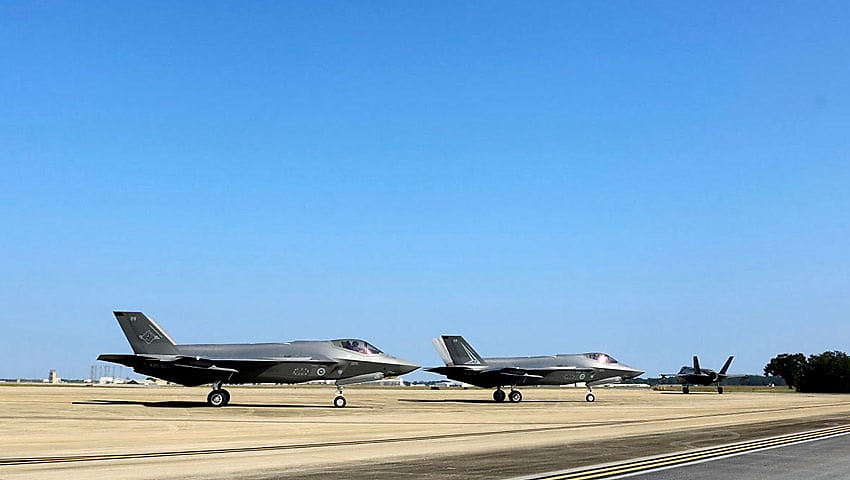The Royal Australian Air Force and US Air Force have successfully participated in Exercise Lightning Spear at Eglin Air Force Base, Florida, from 12 to 28 October, expanding the interoperability of the common platform.
The exercise was an important continuation training for No. 3 Squadron personnel in line with their ongoing focus of the integration of people and systems for the F-35A.
Officer Commanding No. 81 Wing Group Captain John Haly said the exercise demonstrated crucial capability of the growing Lightning force in Australia.
GPCAPT Haly said, “Working with the United States Air Force provides important military-to-military engagement opportunities for Air Force to build on our shared understanding of a platform we both operate. Our Air Force team has used this exercise to further develop their skills as world-class air and ground crew.”
The team then conducted Exercise Lightning Ferry to bring an additional nine Lightning aircraft back to Australia.
The aircraft travelled from Luke Air Force Base, Arizona, to RAAF Base Williamtown via Hickam Air Force Base in Hawaii, sustained by Air Force’s KC-30A multi-role tanker transports.
GPCAPT Haly said the support provided to Air Combat Group by Air Force’s Air Mobility Group and Combat Support Group contributed to Exercise Lightning Ferry’s success.
“The ferry allowed us to demonstrate our ability to deploy a significant fighter capability halfway across the world in a short period of time,” he said.
With these new additions, Air Force now has 30 F-35A Lightning II aircraft in Australia of the planned 72-strong fleet.
All Air Force personnel involved in Exercises Lightning Spear and Lightning Ferry followed strict isolation and quarantine protocols, in line with national and state requirements.
“Our maintenance, logistics, administration, operations, electrician and air load personnel work together to make our force truly expeditionary,” GPCAPT Haly added.
The Lockheed Martin F-35 Joint Strike Fighter is billed as a catalyst for the fifth-generation revolution, changing the face and capability of the Royal Australian Air Force and the wider Australian Defence Force.
For the RAAF, the F-35A's combination of full-spectrum low-observable stealth coatings and materials, advanced radar-dispersing shaping, network-centric sensor and communications suites – combined with a lethal strike capability – means the aircraft will be the ultimate force multiplying, air-combat platform.
The F-35A – the variant chosen by the RAAF – will have with a projected life of 30 years in service.
Ten nations are currently flying F-35s, including the US, UK, Italy, Norway, Israel and Japan. The first of Australia’s F-35A aircraft are now based on home soil after a period of training and development at Luke AFB in Arizona, plus an epic Pacific Ocean crossing In December 2018.
Over the coming years, Australia will purchase 72 of the advanced fifth-generation fighter aircraft as part of the $17 billion AIR 6000 Phase 2A/B program – which is aimed at replacing the ageing F/A-18A/B Classic Hornets that have been in service with the RAAF since 1985.



